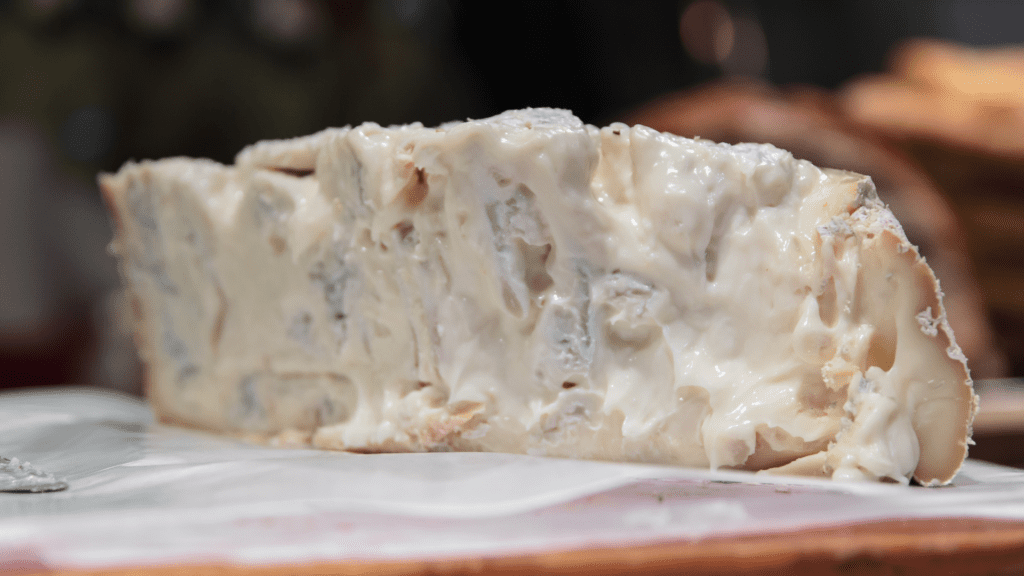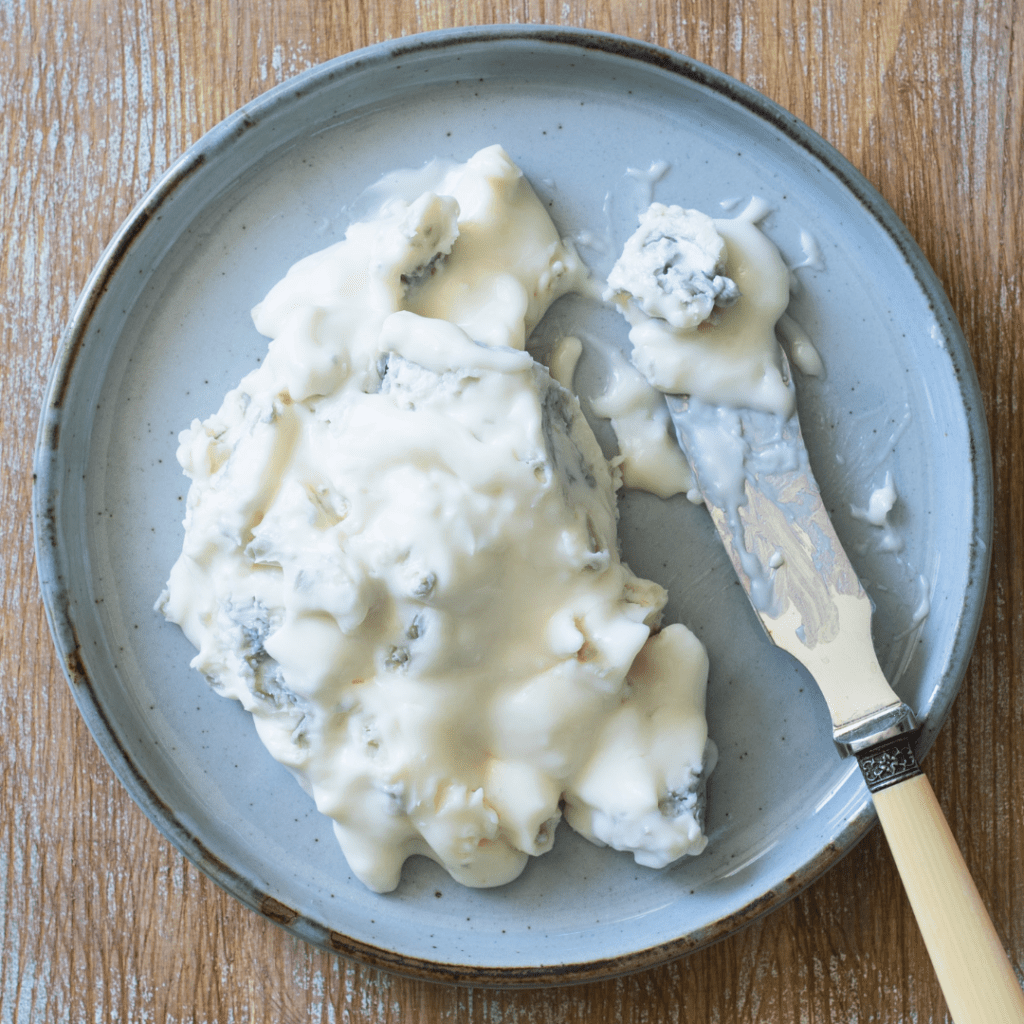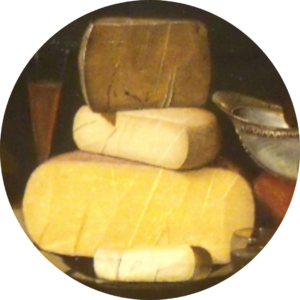The Cheese
Your cheese is a Gorgonzolas Dolce, the softest and youngest of the gorgonzolas.

| Body | Luscious, creamy body with occasional firm blue tumors. It should collapse. |
| Tastes | Sweet and savory with notable salt and lingering mild sourness. No bitter notes. |
| Dairy flavors | Cream; fresh milk. |
| Other flavors | Blue: mushroom, spice Earthiness: dry earth, wet earth, meaty nose on the rind Nuttiness: (mild) toasted walnuts, hazelnuts or almond butter Fruity: (mild) ripe pear or figs |
Gorgonzola is a DOP (Denominazione di Origine Protetta) cheese, the same regime that protects Champagne and Melton Mowbray Pork Pies. It has to be made in particular regions, primarily Lombardy and Piedmont in northern Italy, to a particular recipe and with milk from the region. These rules were codified in 1955 but date back centuries. It is one of Europe’s Noble Cheeses, and rarely copied.
The first from Gorgonzola was likely made to store excess milk as herding communities migrated seasonally to and from the Alps. Records show blue cheese dating back to 9th century. Legend has it that it was such an awful cheese no village wanted to be responsible for it, and Gorgonzola got stuck with it.
There are two types of Gorgonzola
- Gorgonzola Picante: firm, spicy, strong. Aged about 6 months.
- Gorgonzola Dolce: gooey, runny, creamy, milky and spicy. Aged about 3 months.

Gorgonzola Picante may also be known as Mountain Gorgonzola or Gorgonzola Naturale. It is sometimes incorrectly called Gorgonzola Traditionale.
Gorgonzola Dolce, the cheese for this tasting:
- is 11-12kgs (24-26lbs)
- is gooey almost like thickened milk
- the blue develops as vertical veins or blue tubes from top to bottom. Sometimes firmer tumor-like blue lobes grow within the cheese
- the rind is white and orange, and lightly sticky. Most people don’t eat it.
- a large sigil of the producer will impressed on the bottom and top.
- is usually contained and transported within a wood slatted girdle as it is too soft to support its own weight.
Gorgonzola is credited by Italians as being the first blue cheese. Curd made from evening milk is left overnight and becomes naturally inoculated with blue mould. Morning milk added the next day seals in the spores and the blue mould develops. There is a romantic tale of a young cheesemaker leaving the dairy early one evening when he saw a beautiful girl passing his window. His not returning until the next morning supposedly led to the magical discovery of blue cheese.
Tasting Notes:
- Body and Texture: a luscious, creamy body. Rich, smooth and buttery, the curd coats your palate
- Tastes: notable savoury, salty and sweet, it has a mild lingering sourness. There should be no bitter notes.
- Dairy Flavors: Creaminess is the defining characteristic of Gorgonzola Dolce, plus subtle fresh milk.
- Other Flavors:
- blue veins bring characterful notes of mushroom and spice
- nuttiness, particularly toasted walnuts, hazelnuts or almond butter
- earthiness: dry earth, wet earth,
- subtle fruity undertones – ripe pear or figs
- rind: meaty and “high” notes
Gorgonzola in the USA
Gorgonzola is a DOP product, recognised by the USA. This means it can only be made in specific regions of Italy and no cheese made in the USA can be called gorgonzola. About $35-$40m of gorgonzola is imported each year, which compared to parmesan (nearly $1bn) is not very much.


